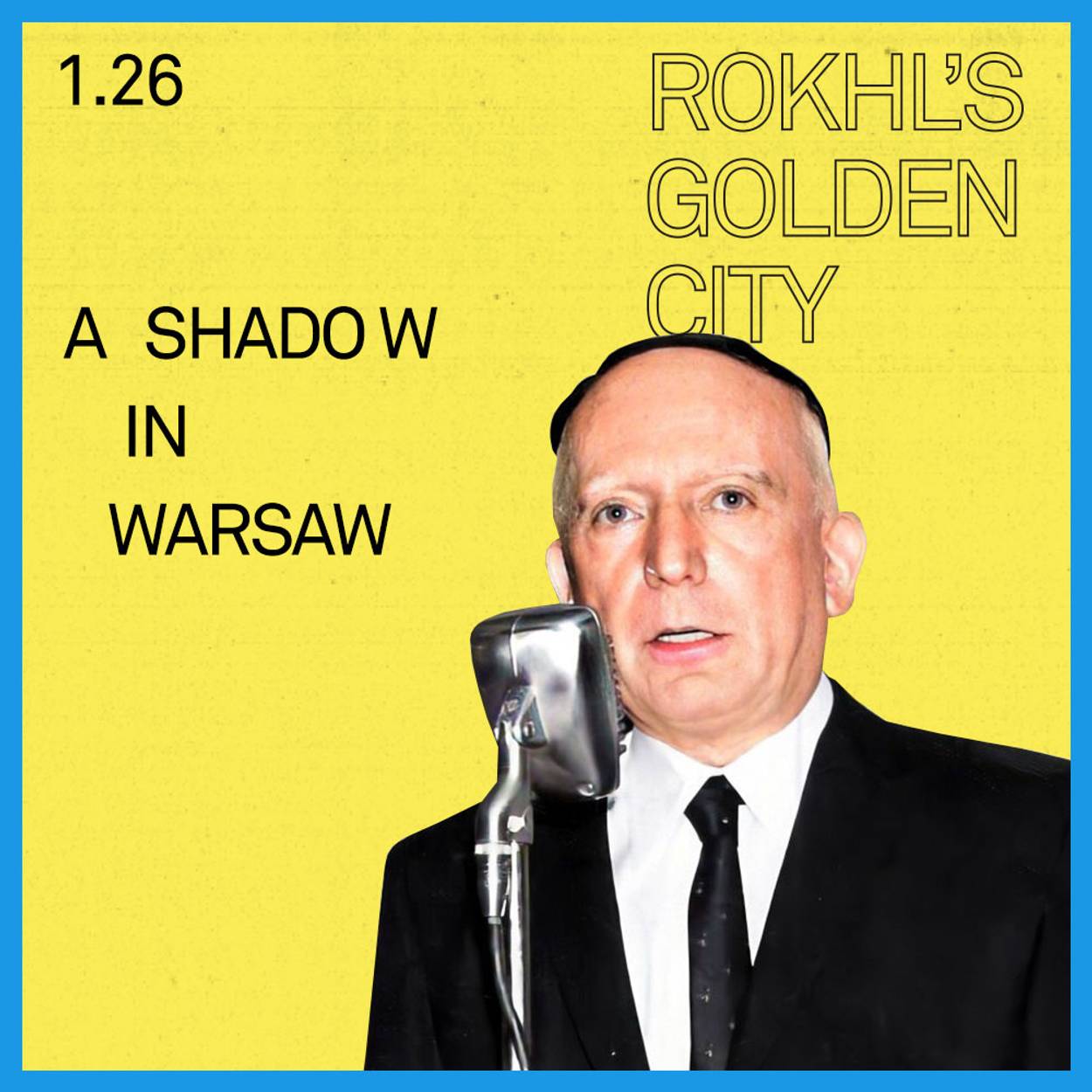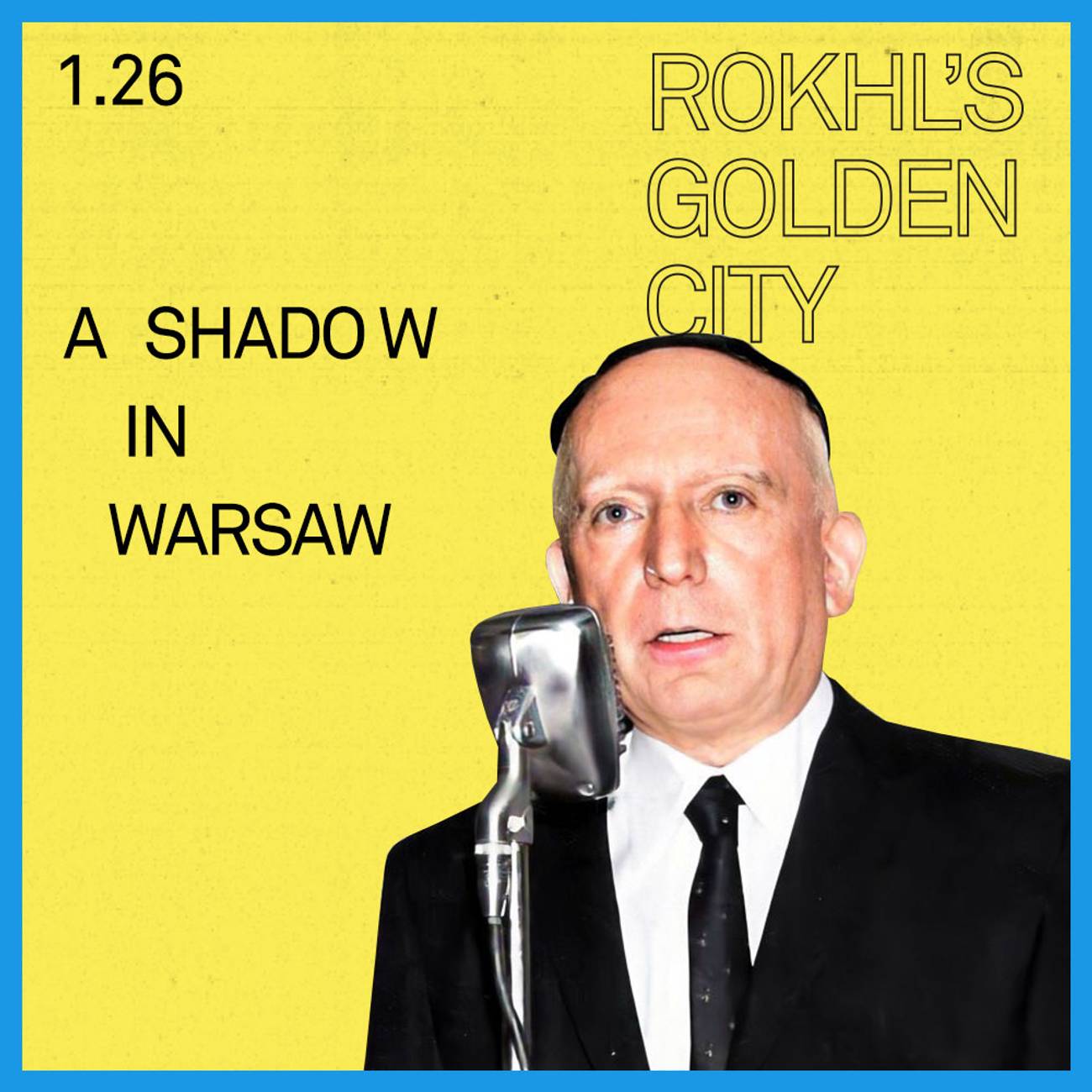Rethinking Authenticity
Rokhl’s Golden City: Defining the Other—and the Yiddish self—in poetry and music




Who am I and what is my relationship to the past? For the modern Jew, there are perhaps few questions greater than this.
American Jews have never stopped struggling with their relationship to the past. Consider the 76% of American Jews (per the 2020 Pew survey) who view “Remembering the Holocaust” as essential to being Jewish. (This is in contrast with the mere 45% for whom “Caring about Israel” is essential, not to mention the 15% who claimed the same about “Observing Jewish Law.”) In fact, for almost every single demographic slice across the data categories listed, “Remembering the Holocaust” was deemed the most essential to being Jewish.
While there are certainly myriad factors working to put the Holocaust at the center of modern Jewish life, it makes sense to me that at a time of diminishing historical consciousness, the Holocaust would be so crucial to American Jewish identity. Understanding one’s own place in history is key to identity formation. For many, the Holocaust is the sole entry point to a thousand years of European Jewish existence. It provides their geographic orientation to Eastern Europe and maybe even their primary contact with Yiddish language and song. And while American Jews as a whole are not terribly interested in going to synagogue, the various days of Holocaust commemoration provide their own structure to the American Jewish calendar.
To produce this American Jewish identity of remembrance, then, there must be a coherent world to which we return, defined in terms we understand: victims and perpetrators, resistors and cooperators, survivors and martyrs. And all of this must be part of the same world, one understood according to its (seemingly) inevitable end.
But some voices, and some texts, resist incorporation, anticipating future commemorators and pushing them away. The Yiddish poetry of Aaron Zeitlin is a particularly arresting example. In May 1943, the Nazis finally crushed the Warsaw Ghetto uprising, then methodically reduced the ghetto area to rubble. In 1944, Zeitlin wrote the poem “A Shadow in Warsaw”:
I’m a person in New York and a shadow in Warsaw,
an eternal shadow in a non-existent house.
Zeitlin was at the forefront of Yiddish literary modernism, living in the capital of Yiddish culture, Warsaw, between 1907 and 1938. By chance, he found himself in America when war broke out. After the war, writes Yeshua G.B. Tolle in a recent essay about Zeitlin, Zeitlin’s “dilemma, starkly put, is that the world is over—and somehow he is still among the living.” What future is there for a poet whose audience has disappeared?
By Tolle’s reading, Zeitlin’s postwar poetry had no country of origin and no hope for destination. Its readership had been murdered, with no hope of reconstitution. Zeitlin’s work seems to exist in a liminal poetic space, at the poet’s own insistence, an art meant for ghosts, not people. “What would it mean to translate, adapt, and assimilate this literature whose origins are not only uncertain but resistant to retrieval?” asks Tolle. “Between the glibness of circulation and the failure of reception, whose world is constituted in and by this verse?”
It seems to me no coincidence that Daniel Kahn’s gorgeous new album of Yiddish song, Verter-Betler (Word Beggar), proceeds from this seemingly impossible task. The album takes its title from a 1947 Zeitlin poem, “Zeks Shures” (Six Lines), which Kahn himself translates into English and sets to music:
kh’veys: keyner darf mikh nisht af ot dem oylem,
mikh, verter-betler af dem yidishn bes-oylem.
ver darf a lid—un nokh dertsu af yidish?
I know, this world will never find me necessary,
me, a lyric beggar in this Jewish cemetery.
who needs a song—let alone in Yiddish?
(English translation by Daniel Kahn)
Kahn is usually identified as a key player in the younger generation of the so-called klezmer and Yiddish revival. And that’s true. He, like me and many of my friends, grew up without Yiddish culture, taking it on as an adult and a working artist. But I don’t think that label does much to interrogate the aesthetics of his substantial body of work, nor does it explore how his songs express their own kind of modern Jewish identity.
Two new books in particular have recently shifted the way I approach these questions. Both take as their subject the ways Jewish artists before WWII appropriated the Other as a means of constructing new identities. Both push us to think more closely about work like Kahn’s and to deconstruct our assumptions about “revival” and authenticity.
In his brand-new book, Jewish Primitivism, Samuel Spinner explores an intriguing paradox. At the turn of the 20th century, primitivist art served as a critique of European modernism “activated by the positive evaluation of a purportedly premodern society.” Think Gaugin going to paint the natives of Tahiti. Necessary to primitivism was an object that was distinctly Other: “dark-skinned, illiterate, uncivilized, superstitious, prelogical.”
But if Jews were the quintessential urban, literate, moderns, how could they serve as Other to themselves? “Jews turned the ethnographic lens on themselves not so much to salvage or study the premodern vestiges of their own culture, and certainly not to denigrate themselves, but instead to critique the distinction, so starkly drawn in modern ethnography and aesthetic primitivism, between subject and object. … Only in this inherently destabilizing manner could the impossible situation of European Jews be analyzed and reimagined.” For Spinner, Kafka’s writings on Hasidim, for example, are “a provocative example of Jewish primitivism” that, in the end, demonstrate less Kafka’s desire to “replace the bourgeois Jewishness of his upbringing with something more authentic” but, in the end, “to be free of the entire problem of identity.”
The blurring of the line between artistic and ethnographic is an unfortunate trope often imposed from the outside, onto the klezmer and Yiddish world (and sometimes from the inside, too). Because Yiddish culture is so estranged from so many of us, its use is inevitably freighted with notions of romantic essentialism, a quest for ultimate authenticity. (As if authenticity was something that could be hunted down and taken internally, like Dr. Jekyll’s potion.) Spinner’s study takes artists familiar to many in the Yiddish world—Peretz, Ansky, Der Nister—and allows us to see them anew, not as avatars of authenticity, but as modern artists navigating new Jewish identities, using Yiddish materials in ways not so unfamiliar to us today.
I think that in order to understand what Kahn has been doing with Yiddish song, it’s important to note that most of his work has been created as an American Jew living in Germany. Many of his collaborators are German, and translating between Yiddish and German is a common theme in his work, as seen on Verter-Betler. Germany is also a place where American Jews like me go in order to be scandalized by the lusty zeal with which many Germans pursue all things Jewish and Yiddish. Indeed, I think a deep awareness of romanticism and primitivism runs underneath the best of Kahn’s work, lending just the right edge of skepticism to his work.
Verter-Betler features three of Kahn’s original translations of American pop songs, from English into Yiddish. One is Leonard Cohen’s “Hallelujah,” which has now been seen a couple million times on YouTube, the other two are Bob Dylan songs. All three are superb translations in themselves. Their placement on the record also calls attention to Kahn’s identity as a singer-songwriter in the Dylan-Cohen tradition. Unlike the artists Spinner covers in Jewish Primitivism, Kahn is not pushing formalistic boundaries, and he is not claiming to revive anything. But what’s so interesting about his Dylan and Cohen covers is that he sets out to make Bob Dylan and Leonard Cohen more Jewish, and succeeds. In this regard, I found Amelia Glaser’s award-winning new book, Songs in Dark Times: Yiddish Poetry of Struggle From Scottsboro to Palestine, to be wonderfully thought provoking, and illuminating.
Glaser’s book tells the story of the Yiddish internationalist poets of the “long 1930s.” These artists identified as workers, but used Yiddish poetry to describe their world in defiantly Jewish terms. For example, in the chapter on the Spanish Civil War, she describes how the poet Peretz Markish opens his poem “Spain” “by placing the war on a continuum of historical Jewish suffering … For Markish, the war is a modern Inquisition that has targeted communists as well as Jews and its heretics.”
These poets also invoked a set of politically inflected terms—passwords, in Glaser’s terminology—within their poetry as a means of demarcating political affiliations, words like “Scottsboro” and “Sacco-Vanzetti.” The total effect was a body of Yiddish poetry that pointed toward a new kind of religious tradition, “modeled on Judaism and consecrated through its affiliation with the Communist Party.”
Though Daniel Kahn has a clearly legible set of left politics, his work is shaped by a very different political context than that of the “long 1930s.” In the poetic space he creates, Aaron Zeitlin’s post-Holocaust pessimism can be given voice next to the newly invigorated Yiddish uplift of Bob Dylan’s “I Shall Be Released.” This is not the sound of revival, but of new Jewish identities, smuggled across constantly shifting borders of Self and Other.
ALSO: Bronx-based Sholem Aleichem Cultural Center presents Abraham Lichtenbaum, former director of YIVO in Buenos Aires, with a virtual lecture, “Sholem Aleichem and Argentina” (in Yiddish) Jan. 30 at 1:30 p.m. Followed by a musical program with singer Lloica Czackis. Please register here … Yiddish Arts and Academics Association of North America (YAAANA) announces its eight-week class for Intermediate & Advanced Yiddish Improvisation. The class is for students who want to develop Yiddish creativity for the stage, using dramatic texts and improvisation techniques, and is taught by Daniel Galay. First session is Feb. 2, register here … In “Dangerous Attractions: Mixed-Sex Dancing and Jewish Modernity,” friend of the column and literary scholar Sonia Gollance will explore how Jewish writers used partner dance as a powerful metaphor for the social changes that transformed Jewish communities between the Enlightenment and the Holocaust. Feb. 3, Leo Baeck Institute London. This is an in-person event at the LBI; reserve your seat … Workers Circle will present Winter in Yiddishland, an all-day program featuring Yiddish classes for all levels and ages, lectures by Yiddish scholars (in English and Yiddish), nigunim workshops, concerts and more. Feb. 6, register here … On Feb. 17, YIVO will present “An Evening of Yiddish Theater in Translation: Celebrating Nahma Sandrow’s Yiddish Plays for Reading and Performance.” This will be an in-person event, proof of vaccination required. Register here … This March, the Yiddish Book Center is offering a new online course called “Glikl and Her Sisters: The Creative Lives of 17th-Century Jewish Women.” Class will be held on four consecutive Tuesday evenings, March 8-29. Includes short talks with scholars, a Q&A, and small-group discussions. Register for the class here … Seattle’s Tales of the Alchemysts Theater just released a wonderful new project. They’ve teamed up with column favorite Miriam Udel to transform some of the stories from Udel’s wonderful treasury of Yiddish children’s literature, Honey on the Page, into a beautifully produced radio play for the whole family. Also featuring friends of the column, the Seattle klezmer folkies of Brivele. Do yourself a favor, rush over to the Tales of the Alchemysts Theater website now and give it a listen.
Rokhl Kafrissen is a New York-based cultural critic and playwright.